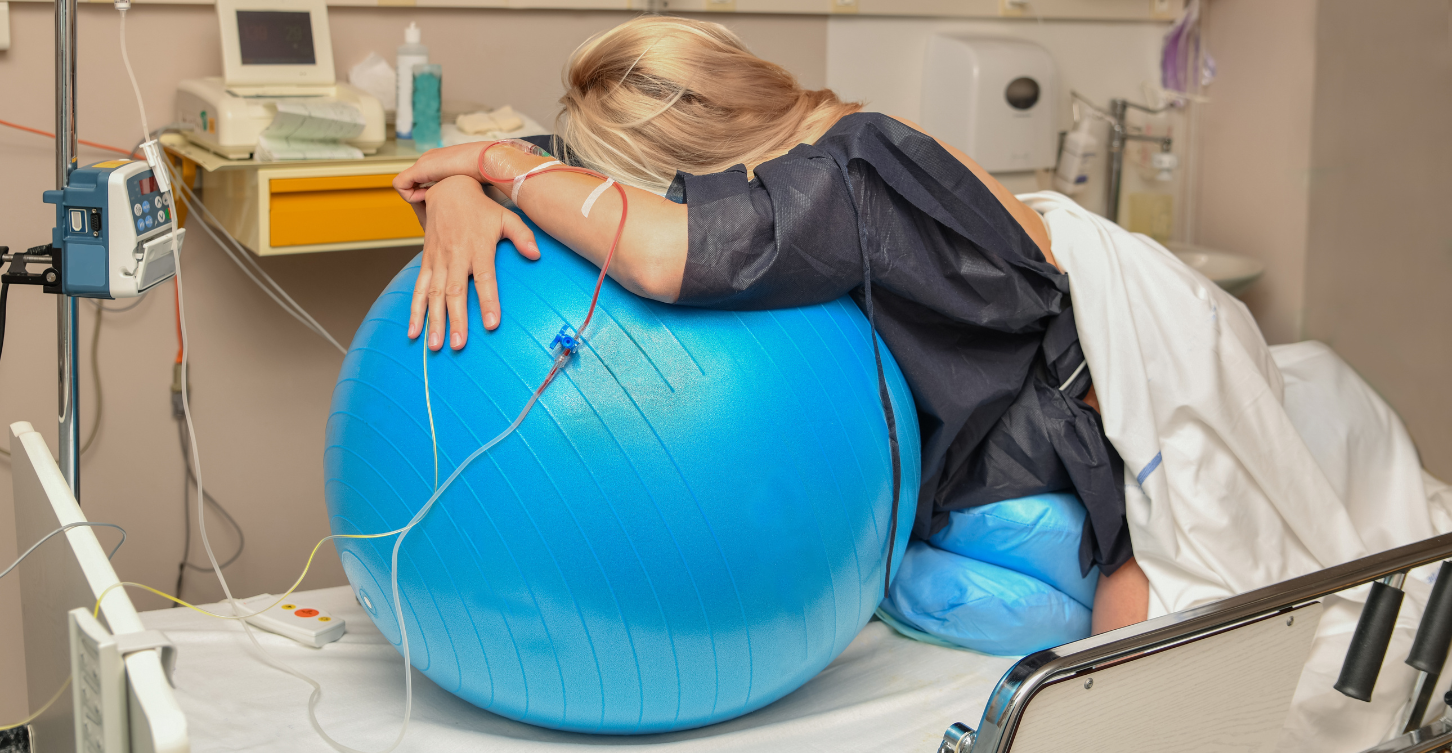A Midwife's Guide to Labor Positions and Support Tools
July 27, 2023
Categories: Gynecology, Healthy Living, Maternity, Obstetrics Gynecology, Pediatrics, Women
Childbirth is no small physical feat. It is one of the most challenging things a woman can do in her life. Although movies usually portray women in labor while they are lying flat on a hospital bed, there’s no rule that says it must be done that way. Unless there’s a medical reason for otherwise, there are many labor positions and support tools you can try, depending on your comfort and preference. Different positions and tools can help you through the process by reducing pain, opening your hips and helping the delivery progress, among other things. The effectiveness of different positions and tools can vary depending on the stage of labor, the baby’s position and the individual preferences and needs of mom.
As a midwife with Tallahassee Memorial HealthCare’s (TMH) Midwifery, I help women every day during labor and delivery. Midwives and nurses often encourage women to change positions and try different tools during labor to facilitate progress and reduce discomfort. It’s essential for mom to communicate their desires with healthcare providers, to attend childbirth classes and be aware of their options. While we always encourage you to be flexible and keep an open mind, we’ve created a birth wish list to help facilitate a conversation with your providers about your labor and delivery preferences.
Every birth is unique and finding the most comfortable and effective position can contribute to a positive birth experience. Here are some of the common laboring positions and their potential advantages:
Birthing Positions
Upright Positions
• Standing: Standing allows gravity to help the baby come out which may help progress labor and relieve pressure on the back.
• Squatting: Squatting helps widen the pelvis outlet and provide more space for the baby to come out. It can also help open the birth canal and make pushing more efficient.
• Walking: Walking can help manage pain, encourage contractions and promote baby’s descent.
Sitting Positions
• Supported sitting: Sitting on a birthing ball or with support behind your back can help reduce pressure on the perineum and provide a more comfortable position for resting between contractions.
• Reclining or Semi-Reclining: This position can be beneficial for resting during labor and may be useful in the later stages when pushing begins.
Kneeling and Hands-and-Knee Positions
• Kneeling: Kneeling on all fours or with the upper body elevated can help relieve back pain and reduce pressure on the perineum. It may also encourage the baby to rotate into an optimal position for birth.
• Hands-and-Knees: This position can reduce pressure on the back, improve fetal positioning and allows the baby more space to descend.
Water Birth Positions
• Sitting in Water: Being immersed in water can provide pain relief, relaxation and increased mobility during labor. Labor & delivery rooms with tubs are available upon request in our Tallahassee Memorial Alexander D. Brickler, MD Women’s Pavilion. Various positions can be adopted within the tub like kneeling or squatting.
Side-Lying
• Laying on One Side: This position is helpful for resting during labor and may be beneficial if the woman is experiencing fatigue or requires continuous monitoring.
Birthing Support Tools
At TMH, we offer multiple assistive tools to help you through the labor process, such as:
Comfortable Upright Birth (CUB)
A CUB is an inflatable, U-shaped cushion designed to aid in the labor progress and with pain management during labor and childbirth by providing a comfortable and versatile platform for upright positions. The CUB can be used while squatting, kneeling or sitting. It can help alleviate pressure on the back and pelvis and it can be used in water.
Peanut Ball
A peanut ball is an inflatable, peanut-shaped exercise ball used during labor and childbirth to assist women in various laboring positions. It’s particularly useful for women who are receiving epidural anesthesia and may have limited mobility during labor, but it can be used with or without an epidural to enhance comfort and progress during labor. Typically, a peanut ball is placed between the legs while mom lays on her side to slightly elevate and separate the legs to promote pelvic opening and create more space in the birth canal. The peanut ball can be used in other positions as well, including seated or semi-reclined. Using a peanut ball can help mom find a comfortable position and relax during labor. The peanut ball also encourages the baby’s head to rotate to an optimal position for birth. A well-aligned baby can progress through the birth canal more easily, potentially reducing the duration of labor and the need for interventions.
Footrests and Leg Supports
Hospital bed have both footrests and leg supports available to support the laboring patient as needed or desired. These are attached to the end of the delivery bed and can be adjusted to the patient’s comfort. They are most used during the birth process or immediately after to support a woman’s legs or feet and provide a comfortable and accessible position for the birthing process. Footrests are designed to allow the legs to rest in a raised and flex position. They’re typically used during the pushing stage of labor – when mom is ready to deliver. They also provide easier access to the perineal area for healthcare providers like midwives and obstetricians to assist with delivery and perform any necessary interventions. Leg supports are used to supports moms who may have shaky legs during delivery. These are both particularly helpful for women who have received epidural anesthesia, as they may have limited mobility in their lower bodies.
Hand Grips
Hand grips on the hospital bed can provide a stable place for mom to hold onto during labor or pushing. Holding onto hand grips allows mom to use her upper body strength to aid in pushing during labor. It can also offer a sense of control and stability, which can be comforting during the intense and challenging parts of labor.
Birthing Ball
A birthing ball, also known as an exercise ball or Swiss ball, is a large, inflatable ball often used during labor to provide support and comfort for mom. It can help manage pain, promote relaxation and encourage movement during the different stages of labor. Mom can sit and bounce on the ball, lean on the ball or use it to move into other positions. It can be used to facilitate pelvic tilting exercises which can help the baby rotate into a favorable position.
Epidural Anesthesia
An epidural is a medical procedure commonly used to provide pain relief during labor and childbirth. It involves administering medication into the epidural space of the spine, blocking nerve signals in the lower part of the body and reducing pain. It typically takes 10 to 20 minutes to provide significant pain relief and can last for several hours in some cases.
Squat Bar
The squat bar can be attached to the hospital bed and can be used in a number of ways. In addition to being used as support while in a squatting position, the squat bar can be used to rest the feet against. Moms can also wrap a sheet around the bar and pull on the sheet to use as leverage while pushing.
Wondering what to expect when you deliver at TMH? Read more about it here.
Whether you’re a first-time parent or have already little ones running around, we’re here to help you every step of the way as you bring new life into the world. Our expert team of doctors, midwives, nurses, specialists and educators are here to provide you the highest level of care while helping make your birth experience as positive as possible.
Before your delivery, you can download our New Baby Bundle, which includes the birth wish list, hospital packing list, 10 FAQs about delivering at TMH and more.
For more pregnancy and parenting health resources like this, subscribe to our Sweet Peas Pregnancy & Parenting Club
